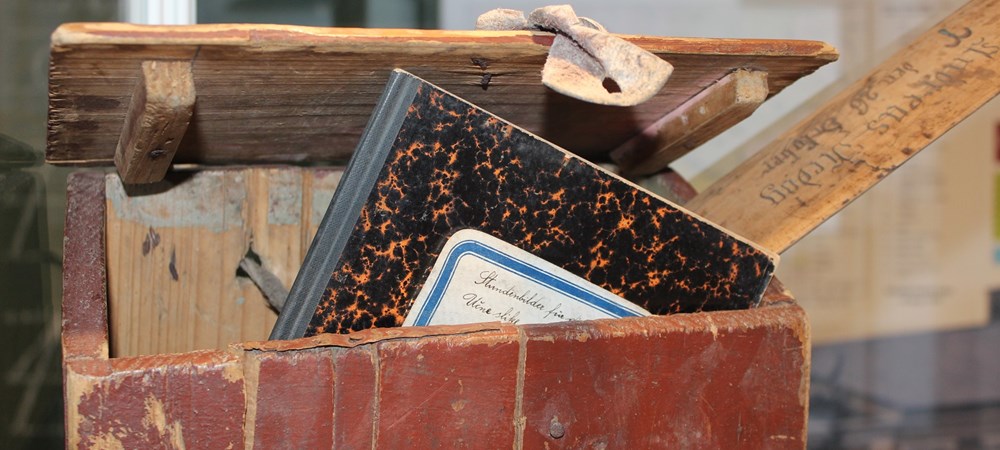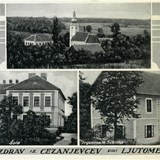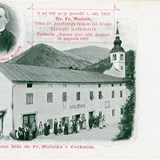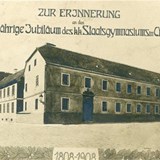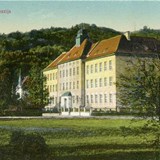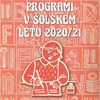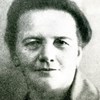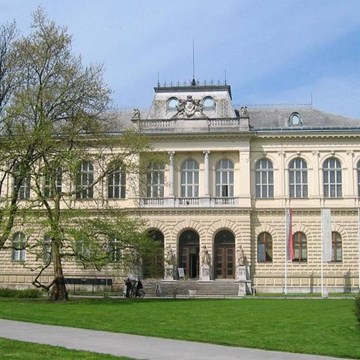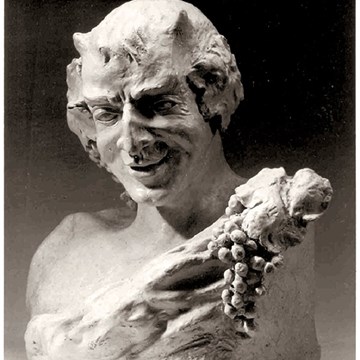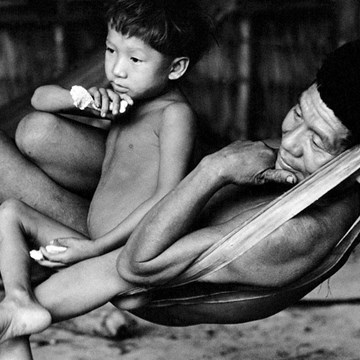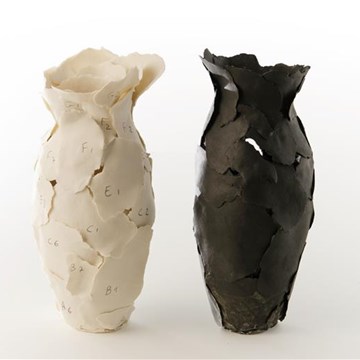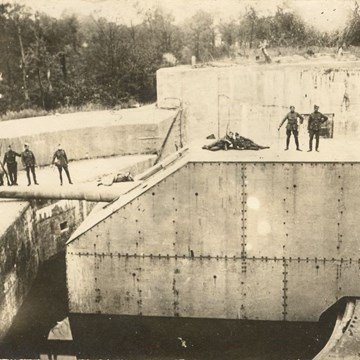Slovenian School Museum
Slovenski šolski muzej
Historical Significance of the Slovenian School Museum
The Slovenian School Museum in Ljubljana, founded in 1898, is the oldest specialized museum in Slovenia focusing on a specific sphere of man's activities. Unlike the Provincial Museum in Ljubljana (1821) and the municipal museums in Celje (1882) and Ptuj (1895), the Slovenian School Museum was not limited to the territories of the then administrative units; the museum can thus be regarded as the first Pan-Slovenian museum. Exhibitions of teaching aids were organized before an institution of this kind came into existence, promoting the idea of a school museum and increasing teachers’ interest in studying the history of schools and pedagogy in the territory populated by the Slovenian nation.Founded in 1898
The museum was opened due largely to teachers’ increasing awareness of their profession and national background. The idea originally came from Jacob Dimnik, a primary school teacher from Ljubljana, who endeavored to establish an institution presenting the history of schools and the work of teachers in Slovenia.
On the 50th anniversary of Emperor Franz Joseph's reign, 2 August 1898, the Slovenian Teachers' Association held its annual general meeting where they opened a teaching aids exhibition and established a Slovenian school museum.
Because the museum was dependent on teachers' organizations for financial support and there was no regular funding for its maintenance, its core activities were hindered, and the museum had to move across Ljubljana several times. Its last seat was at the Učiteljska tiskarna printing house, where it was dissolved in 1912.
Re-established in 1938
After the First World War, the progress of education called for the museum's re-opening with the idea that the museum should primarily collect documents providing a detailed picture on the state of schools and education. Restoration, however, was not yet to come about. It was only in the 1930s that the idea was revived by Dr. Karel Ozvald and encouraged by Rudolf Kobilica, head of an experimental school in Ljubljana. Upon his proposal, the educational department of the then-banate issued a special decree on 27 May 1938, establishing a museum of Slovenian education. Since then, the museum's activities as a free-standing institution have never been interrupted.
Structure of the Museum
The museum's primary role, originally defined in 1938, is that of collecting materials on the history of primary and secondary schools operating in the Slovenian territory. This basic concept was revised in 1951, dividing the museum into three separate units, the collection of exhibits, the library, archives, and documentation. The museum also began to research all institutions dealing with education. This revised concept defined the museum’s long-term mission and organizational structure. Thanks to the documentation it collected and systematically expanded for all schools located in the Slovenian territory, the museum was entitled the "documentation center for the history of schooling" in 1960. At the same time, the documentation unit was separated from the archives. On its 100th anniversary, the museum still adheres to the work program conceived more than ten years ago, but its activities have become much more diverse and varied. Educational activities, such as lectures and workshops intended for youth, have become significant to the museum’s development.
Museum's Activities
In the 100 years of its existence, the Slovenian School Museum has acquired a large collection of exhibits and materials on the history of schools and pedagogy in Slovenia. Its highly qualified staff no longer only collects and conserves museum exhibits, but rather studies and exhibits such items and undertakes research on the history of education.
Especially interesting among the museum's exhibits and materials are the collections of “black and golden books,” including notebooks, certificates, teaching aids, annual school reports, stereoscopic pictures, photographs of school buildings and classrooms, school equipment (desks, chairs, blackboards), and stationery.
The library has preserved a large volume of original Slovenian educational literature ranging from course books, legislation, and curricula from various periods, to teacher newspapers and journals. It presently keeps more than 55,000 books, including many antiquarian educational books from the 18th and 19th centuries, and even a few incunabula, such as Rudimenta grammatices.
The museum houses a permanent exhibition on education in Slovenia over centuries. Several special exhibitions on school and the history of education, accompanied by rich and informative catalogs (86 produced to date), are prepared every year. In addition to the exhibitions, a classroom dating back to the late 19th century is permanently on display. The Slovenian School Museum is a publisher of Šolska kronika - School Chronicle, the only Slovenian periodical dealing with the history and traditions of Slovenian teachers, teacher associations, and the Slovenian school system.
_______________________________________________________________________________________________________________________________________________
Permanent exhibition School rules!
Education in Slovenia over the years
On the occasion of the opening of the new permanent exhibition in the renovated premises of the Slovenian School Museum
For over 120 years the Slovenian School Museum has been taking care of school heritage that is closely interconnected with the wider cultural, social, and historical events on the territory of present-day Slovenia. Using innovative approaches and new means of expression, the curators and other employees have been striving to address the public at the new permanent exhibition. Since permanent exhibitions are the central project of every museum, our entire professional knowledge, in line with modern museological trends and the latest findings in the history of pedagogy, has been invested in its creation.
The permanent exhibition School rules! presents visitors with education in Slovenia by periods, from pre-historic times to the present. Particularly from enlightened absolutism onwards, the content of school lessons and the whole school system has been governed by state school legislation. Empress Maria Theresa nationalized schools and promulgated the first primary school law (1774) which, among other things, introduced obligatory school attendance for all children between 6 and 12 years old. Since school also means a constant flow of knowledge and numerous experiences, it is now an indispensable part of people’s experience, particularly youngsters, and in their everyday language school really does rule.
From the fundamental characteristics of education, collected in the visual field of visitors, the exhibition leads to interactive research and a more specific search for information and additional deepening of knowledge at the concealed levels of exhibition content. The three-dimensional depictions of school scenes, illustrations of everyday life, toys, sounds and music, pedagogical thoughts, models, and the ambiance revive the spirit of the time and the pulse of schools in each period.
The basic formal concept of the exhibition is based on a big, long blackboard, opposite which stands a long school desk. However, the blackboard is not an ordinary one but, as in a magic cupboard, there are flaps, big and small doors, and drawers that open on it, leading to numerous facts and attractive stories, from archived materials and documents to interesting objects from the school past in Slovenia. Alongside the old educational methods and the then learning materials, the exhibition content comes most alive at live school lessons; these have a tradition spanning over more than 20 years and take place in an old classroom with a live enactment of history, providing a direct experience of lessons in the past.
School-age is at the same time also the age of childhood, youth and growing up. A visit to the new exhibition at the Slovenian School Museum is thus also a journey to the visitors’ youth and school memories, which are unique and unrepeatable for every person.
The exhibition is the result of teamwork by curators employed at the Slovenian School Museum and outside contributors: architects, designers and other museum exhibition experts, as well as craftsmen, who each in their own way contributed to its content, form, and spatial and audio-visual image.
The creation of the permanent exhibition School rules! was made possible by the Ministry of Education, Science and Sport.
You are warmly invited and welcomed to view the new permanent exhibition at the Slovenian School Museum!
Exhibitions and events
Virtual exhibitions
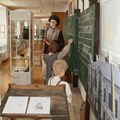
Stalna razstava Šolstvo na Slovenskem skozi stoletja
Permanent exhibitionStalna razstava na različne načine: s sliko, besedo, zemljevidi, grafikoni, maketami, lutkami, risbami, video in avdio posnetki in po zaokroženih obdobjih obravnava zgodovino šolstva in pedagogike...
Educational programs

School Rules!
WorkshopPermanent exhibition School rules! Education in Slovenia over the years On the occasion of the opening of the new permanent exhibition in the renovated premises of the Slovenian School Museum For...
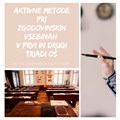
SODELOVANJE ŠOLE IN MUZEJA KOT PRIMER IZKUSTVENEGA UČENJA PRI SPOZNAVANJU ZGODOVINSKIH VSEBIN V PRVI IN DRUGI TRADI OŠ
WorkshopVabljeni k prijavi na programe nadaljnjega izobraževanja in usposabljanja strokovnih delavcev v vzgoji in izobraževanju v sistemu KATIS. V muzeju smo pripravili program na temo SODELOVANJE ŠOLE IN...

Občasna razstava Slikanica, moja prva knjiga
WorkshopPolona Koželj, Anton Arko SLIKANICA – MOJA PRVA KNJIGA Razstava o slovenski slikanici Nekaj besed ob razstavi Slikanica, otrokova prva knjiga, je zvrst...
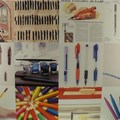
Občasna razstava "Pišem, torej sem!"
WorkshopŠolska pisala in opismenjevanje skozi čas. Vstopnina: - osnovnošolci, dijaki, študenti, upokojenci: 1 € - odrasli: 2 € - voden ogled (vsaj 2 osebi): 3 €
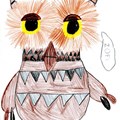
Lutkovna igrica Sovica Zofi odkriva muzej
WorkshopVodiču Jožetu se na poti v Slovenski šolski muzej skrije njegova ljubljenka sovica Zofi. Ker bi rada ostala pri otrocih, njun odhod zavlačuje s številnimi nagajivimi vprašanji....
Collections
Articles
Slovenski šolski muzej v letu 2019
Slovenski šolski muzej v letu 2019
Kako pripraviti obiskovalce na ogled kulturne ustanove
Vzgojno-izobraževalne institucije v svoje učne procese že vrsto let vključujejo programe kulturnih ustanov, ki bogatijo in nadgrajujejo učne programe ter...
Brošura Pedagoški programi 2020/2021
Brošura Pedagoški programi 2020/2021
Pozabljene Ljubljančanke: Vita Zupančič, predana učiteljica gluhonemih
Vita Zupančič je opravljala več družbeno pomembnih vlog. Triindvajset let je bila predana učiteljica gluhonemih in ob tem opozarjala na nestrpnosti slišečih....




